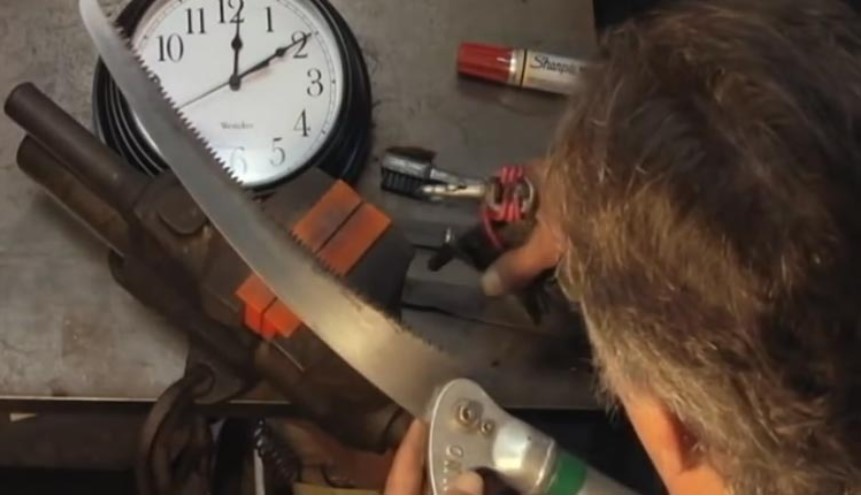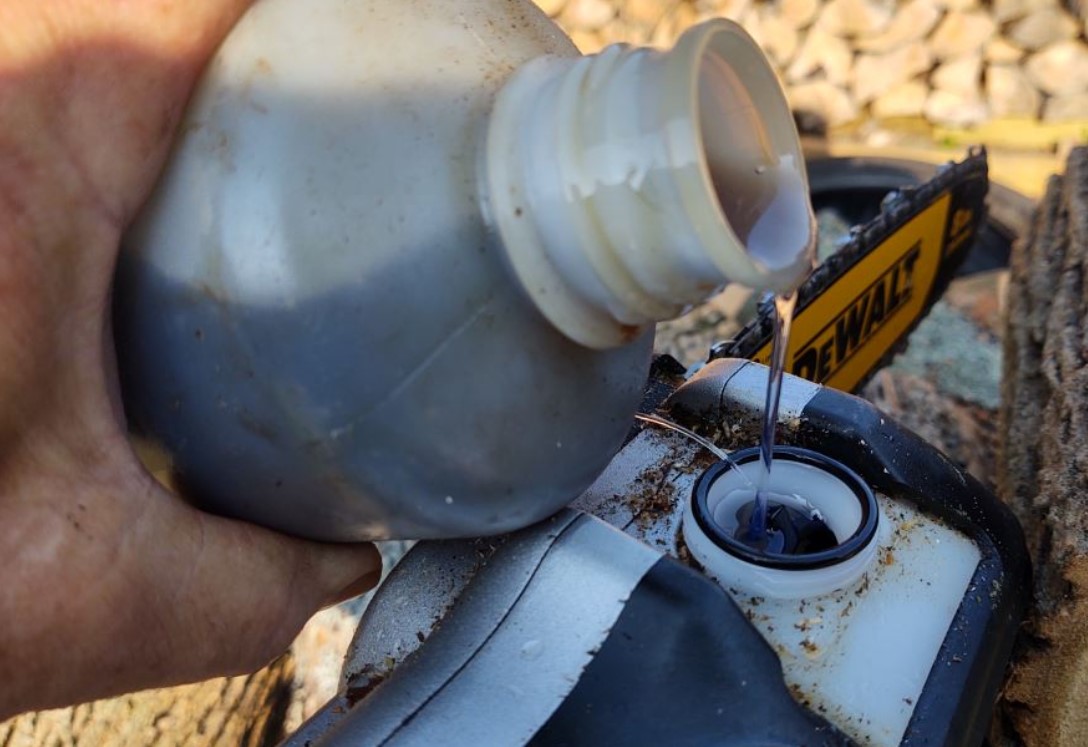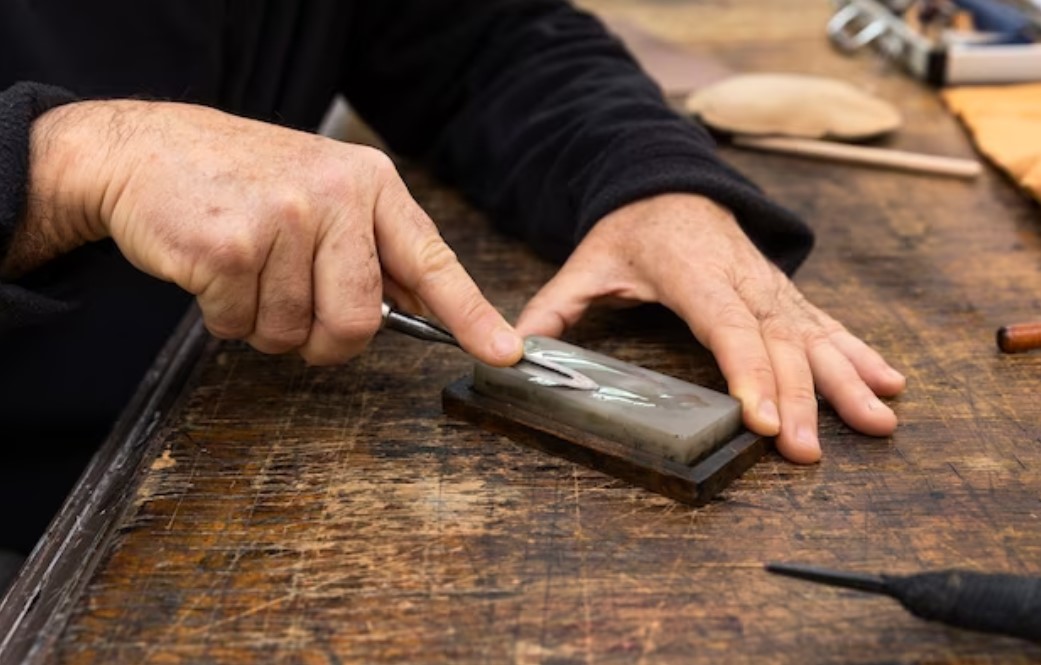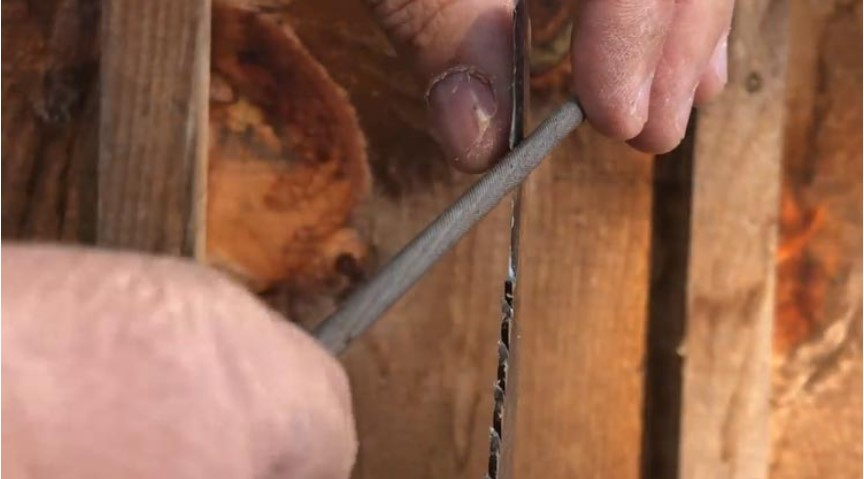How to Sharpen a Pole Saw Blade | A Complete Guide
A pole saw is one of the most important instruments for cutting limbs and trimming trees. A pole saw is regarded as the ideal tool for cutting dry wood due to its toughness and exceptional sharpness. Pole saws, however, need routine repair and maintenance just like any other instrument. Unlock the secrets of effective tree maintenance with our in-depth guide on “How to Sharpen a Pole Saw Blade | A Complete Guide.” This thorough manual addresses every facet of the sharpening process, providing you with step-by-step instructions, valuable tips, and expert insights. Follow along to master the art of blade sharpening and elevate your tree-trimming!
Why is It Necessary to Keep the Pole Saw Blade Sharp?
Ensuring the sharpness of your pole saw blade is more than just a routine task; it’s a critical factor that underpins effective tree maintenance. Beyond enhancing functionality, the necessity of a sharp blade significantly influences tree health, operator safety, and the overall success of outdoor tasks. Discover why maintaining a keen edge on your pole saw blade is paramount for optimal results and a secure tree care routine.

Efficiency and Precision
A well-sharpened pole saw blade glides effortlessly through branches, delivering cleaner and more precise cuts. Dull blades, on the other hand, can lead to tearing and ragged cuts, which not only appear unsightly but also leave trees vulnerable to diseases and pests. The ability to make swift and precise cuts is a hallmark of a properly sharpened blade.
Tree Health
Blunt cuts inflicted by a dull blade can cause undue stress to trees. When branches are cleanly severed, trees can heal more effectively, reducing the risk of infections and diseases. Pruning with a sharp blade promotes healthy new growth and sustains the overall vitality of trees.
Safety
The safety implications of a sharp pole saw blade cannot be underestimated. A sharp blade minimizes the occurrence of kickbacks – sudden, unexpected movements that can pose serious hazards to operators. With a properly sharpened blade, operators maintain better control over the saw, contributing to a safer working environment.

Time and Effort
Dull blades necessitate increased force, transforming once-effortless tasks into arduous undertakings. In contrast, a sharp blade expedites the cutting process, enabling operators to achieve more in less time. This time-saving aspect enhances overall productivity and efficiency.
Cost-Effectiveness
Regular maintenance and sharpening prolong the lifespan of a pole saw blade. A well-kept blade endures longer, reducing the frequency of replacements and yielding cost savings over time. Investing in sharpening translates to a more economical and sustainable approach to tree maintenance.
Reflect Professional Results
Whether one is a seasoned arborist or a dedicated homeowner, a sharp blade is essential for achieving professional-level results. Pristine cuts not only contribute to the aesthetic appeal of landscaping endeavors but also reflect a higher standard of workmanship.

3 Methods for How to Sharpen a Pole Saw Blade
Sharpening a pole saw blade can be done in a variety of ways. Your choice of approach will be affected by the kind of pole saw you have and the degree of sharpness you require. It’s crucial to clean the blade properly before sharpening it. You run the danger of blunting the edge or harming the blade if you don’t. Using a brush wire is the ideal method for cleaning a pole saw blade. Remove any tree fragments that are currently lodged in the saw’s teeth first. After that, clean away any sap and grime that have accumulated on the blade with the brush wire. After cleaning the blade, sharpen the edges and resume your job.
How to Sharpen a Pole Saw Blade Using a Grinder
Step 1: Remove the Blade
The pole saw blade must be properly removed before being sharpened using a grinder, which is the first and most crucial step. Depending on how the blade is attached to the pole, you can remove it either by releasing the bolt or using another method.
Step 2: Clamp the Blade Firmly
Next, make sure the blade is firmly clamped to the workbench. When working on the procedure, don’t forget to put on the appropriate safety gear, which includes a face mask, a helmet, a set of gloves, a pair of goggles, and a long sleeve shirt.
Before you begin, make sure the grinding disc is still aligned with the blade’s angle by holding the grinder up to it in this way.
We advise against using excessive pressure when grinding because doing so could lead to an overheated pole saw blade. Remember that you should sharpen the blade in the same manner that you would a kitchen knife.

Step 3: Check Your Progress
Carefully use a grinder to sharpen the blade. Move the grinder in a consistent back-and-forth motion along the cutting edge. Maintain a steady hand and apply light pressure to avoid over-grinding. Check your progress frequently by inspecting the blade for a shiny, uniform edge. It’s essential to maintain the original bevel angle of the blade for optimal cutting performance.
Step 4: Reinstall the Pole Saw Blade
The final step is reinstalling your blade after you’ve finished honing it. Ensure that you have correctly reinstalled the blade on your pole saw, and you should be good to go.
How to Sharpen a Pole Saw Blade Using a File
Step 1: Put the Pole Saw in a Blade Vice
Secure the pole saw in a blade vice or a sturdy workbench to hold it steady during sharpening. This ensures safety and accuracy throughout the process.

Step 2: File the Beveled Blade
The pole saw should then be sharpened from the back to begin the process of sharpening. Hold a metal file at a 45-degree angle against the teeth.
Push the beveled blade edge along the contour of the teeth after filing the edge. To prevent harm, make sure you’re gripping the pole saw firmly when moving the file.
Make sure to move only your hand in a single direction as you repeatedly strike the blade in a balanced and continuous manner. This is done because if the file is moved back and forth, the metal will become textured, making the blade duller and less useful.
When you’ve finished honing the back of the teeth, switch to the front and repeat. Do not forget to also sharpen the top edges.
On the top edges, gently brush the file from front to back. Before filing the other end of the blade to make it smooth and sharp, make sure to strike the entire cutting side.
Step 3: File the Pole Saw Blade
Move on to filing the flat side of the pole saw blade. Hold the file flat against the surface and stroke it along the length of the blade. This step removes any burrs or nicks that may have formed, enhancing the overall sharpness.
Step 4: Oil the Blade
After the sharpening procedure is finished, apply metal-parts-specific oil to each of the pole saw’s joints. When it comes to cutting through the branches smoothly, the lubricant helps a lot.

Step 5: Regular upkeep essential
Maintaining your pole saw on a regular basis is crucial if you want it to perform flawlessly every time you use it. You must regularly file the blade in order to accomplish that.
Consider carrying some files into your lawn or garden if you plan to conduct a lot of pole saw pruning. This will allow you to work on the blades conveniently and fast while also saving you time.
How to Sharpen a Pole Saw Blade Using Wet Stone Or Sharpening Rod
Step 1: Secure the Blade
Begin by securely clamping the pole saw blade in place. This provides stability during sharpening, ensuring consistent results.
Step 2: Choose the Wet Stone or Sharpening Rod
Select a suitable wet stone or sharpening rod based on the size and condition of your blade. Wet stones are ideal for restoring severely dull blades while sharpening rods work well for routine maintenance.

Step 3: Lubricate the Stone or Rod
If using a wet stone, ensure it’s properly lubricated with water or honing oil. Lubrication helps maintain a smooth sharpening process and prevents overheating.
Step 4: Sharpen the Blade
It is recommended to hold the wet stone or sharpening rod at a congruent angle to the existing bevel on the blade. Proceed with gentle, controlled strokes, moving the stone or rod along the blade’s edge – commencing from the base and progressing toward the tip. Ensuring a consistent application of both pressure and angle is imperative for achieving uniformly sharpened results.

Step 5: Check Your Progress
Periodically inspect the blade’s edge to gauge your progress. Look for a shiny, uniform edge to ensure proper sharpening. If necessary, modify your approach to get the desired outcome.
Step 6: Hone the Blade
After sharpening, use a finer grit-wet stone or honing rod to hone the blade. This step further refines the edge and ensures a polished finish.
Once satisfied with the sharpness, clean the blade to remove any metal shavings or debris. Use a thin layer of oil to prevent rust and corrosion.
Practical Care Tips for Maintaining Your Blades
Blades, whether they are kitchen knives, garden tools, or even razors, play a vital role in our daily tasks. It’s crucial to adhere to practical care advice that can help you maintain them successfully if you want to make sure they last a long time and work at their best.
Blade-friendly storage tips
Proper storage is crucial to prevent blades from dulling or getting damaged. Invest in a magnetic strip or knife block for kitchen knives, keeping them separate and secure. For tools like saws or shears, hang them on hooks or store them in a dry, well-ventilated area. To safeguard sharp edges and avoid unintentional cuts, take into consideration blade guards or blade sleeves.

Prevent debris buildup
Debris and residue can accumulate on blades during use, affecting their cutting efficiency. After each use, make it a habit to wipe down the blades to remove any dirt or food residue, use a wet cloth and mild soap. For gardening tools, a quick rinse and thorough drying can prevent rust and corrosion.
Sharpen as needed
Blunt blades not only make tasks more difficult but can also lead to accidents due to increased force during use. Regular sharpening is key. Invest in quality sharpening tools such as whetstones or sharpening rods. Learn the correct techniques or consider professional sharpening services. A sharp blade not only performs better but also reduces strain on your hands.
Expert upkeep advice
When it comes to specialized blades, seeking expert advice can make a significant difference. Consult professionals for complex tools like chainsaws or high-end kitchen knives. They can offer insights into proper maintenance routines and usage techniques and even recommend specific lubricants or cleaning agents to enhance performance and longevity.
FAQs
How should I store my pole saw to prevent blade damage?
Proper storage is crucial to prevent blade damage and extend the life of your pole saw.It should ideally be hung vertically or horizontally on a wall rack to be stored in a dry, cold environment. To avoid rust and deterioration, keep it away from moisture, intense sunshine, and hot or cold temperatures.

Why is cleaning the pole saw after use important?
Cleaning your pole saw after each use is essential for maintaining its performance and longevity. Sap, debris, and moisture can accumulate on the blade, leading to corrosion and reduced cutting efficiency. Regular cleaning prevents these issues and ensures your pole saw is ready for the next use.
How often should I sharpen the pole saw blade?
The frequency of sharpening depends on usage. As a general guideline, you should sharpen the blade after every 5-10 hours of use. Signs that your blade needs sharpening include increased effort required during cutting, splintered wood, and a slower cutting speed. A sharp blade improves cutting efficiency and reduces strain on the motor.
Are there maintenance tips from experts?
Absolutely! Here are some expert maintenance tips for your pole saw:
- Inspect Before Use: Before each session, inspect the saw for any loose parts, cracks, or damage. Ensure all bolts and screws are properly tightened.
- Lubrication: Regularly lubricate moving parts, such as the chain, sprocket, and pivot points, with appropriate lubricants to reduce friction and enhance performance.
- Chain Tension: Maintain proper chain tension as per the manufacturer’s instructions. A loose chain can derail or cause kickbacks, while an overtightened chain can damage the motor and decrease cutting efficiency.
- Handle Carefully: Handle your pole saw with care to avoid dropping it or hitting it against hard surfaces, which can cause damage to the blade or motor.

Can I use any cleaning solution for the blade?
Use a cleaning agent made especially for cutting blades whenever possible. Avoid using aggressive chemicals that could harm the coating or damage the blade. Mild soapy water or a specialized blade cleaner can effectively remove sap and debris. After cleaning, make sure to thoroughly dry the blade to prevent rust.
Conclusion
This complete guide will help you learn how to sharpen a pole saw blade. Sharpening a pole saw blade is essential for efficient and safe tree trimming. You won’t encounter any issues with dull tools if you make it a natural if not routine, activity. Regular maintenance ensures your pole saw remains effective, extending its lifespan and ensuring optimal performance. Whatever equipment and products you choose to use to sharpen your pole saw and pruner, do not skimp on them.
Related Articles